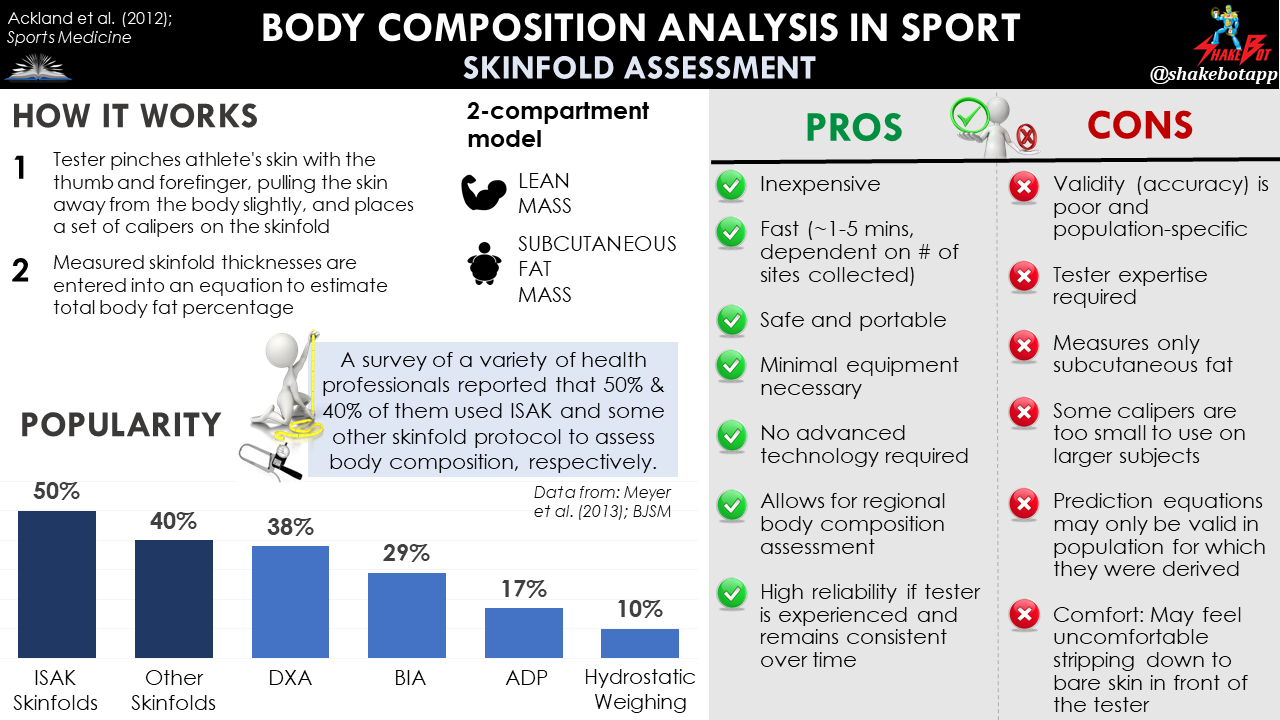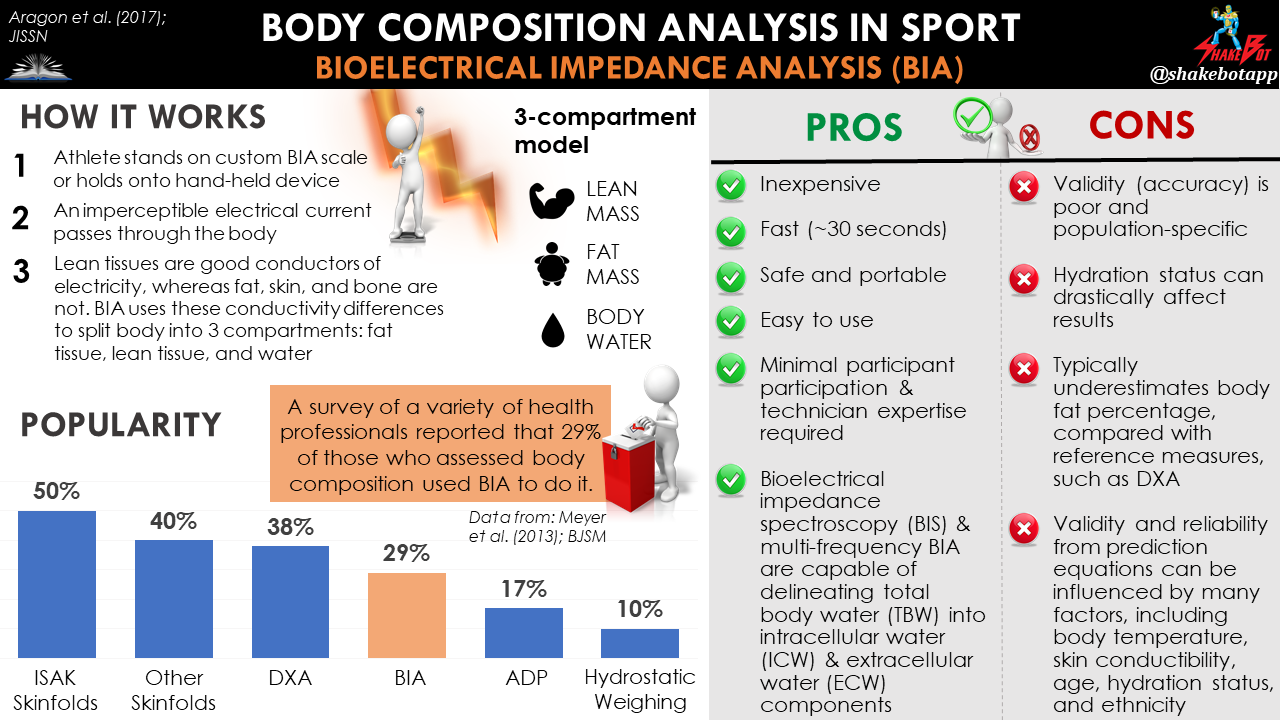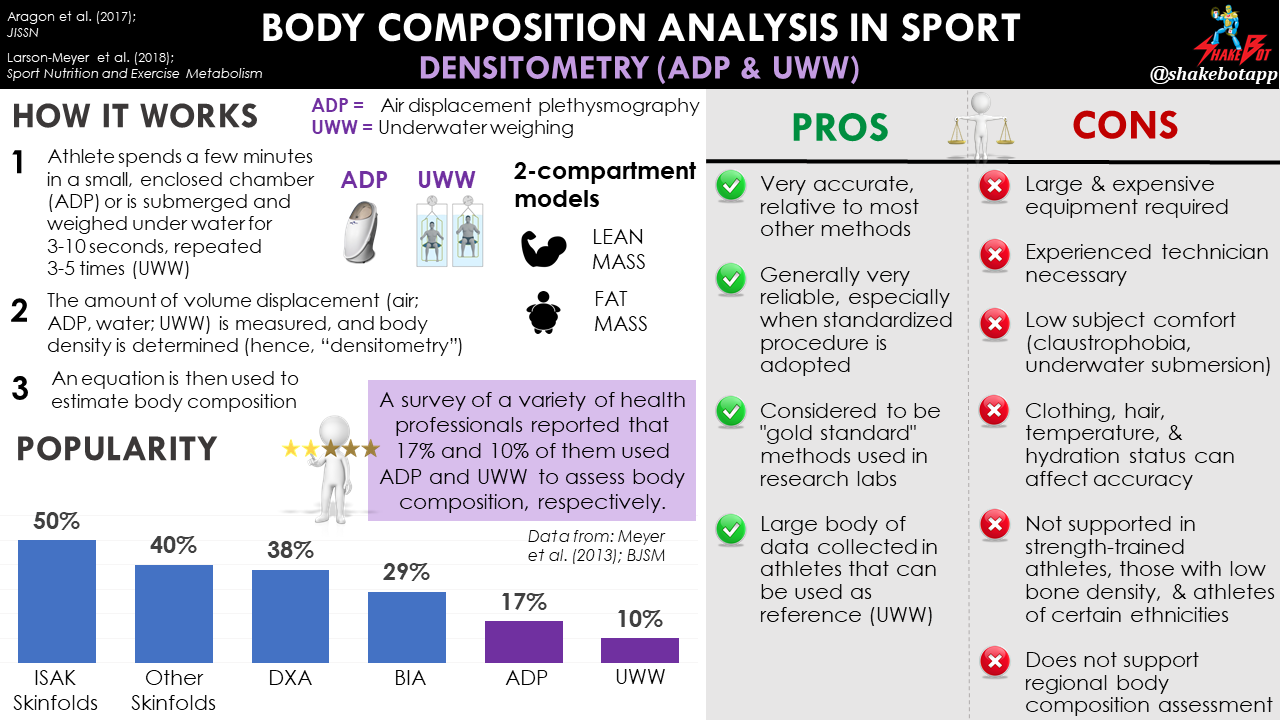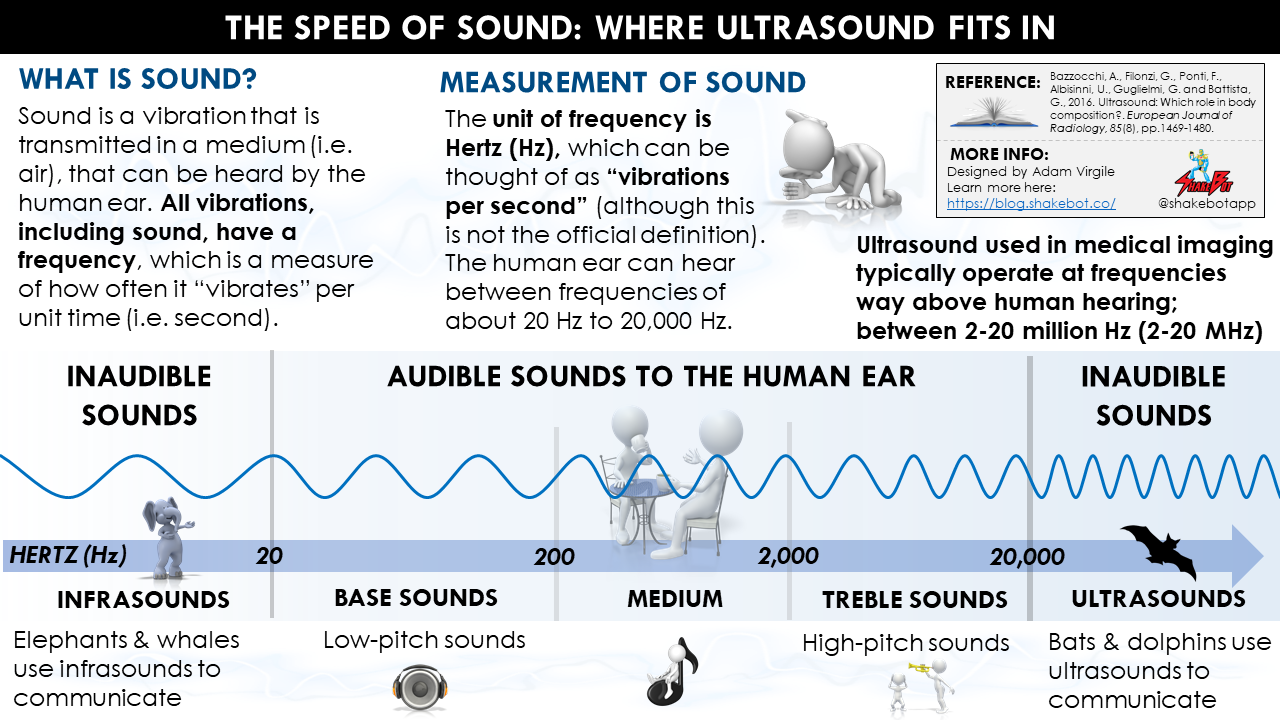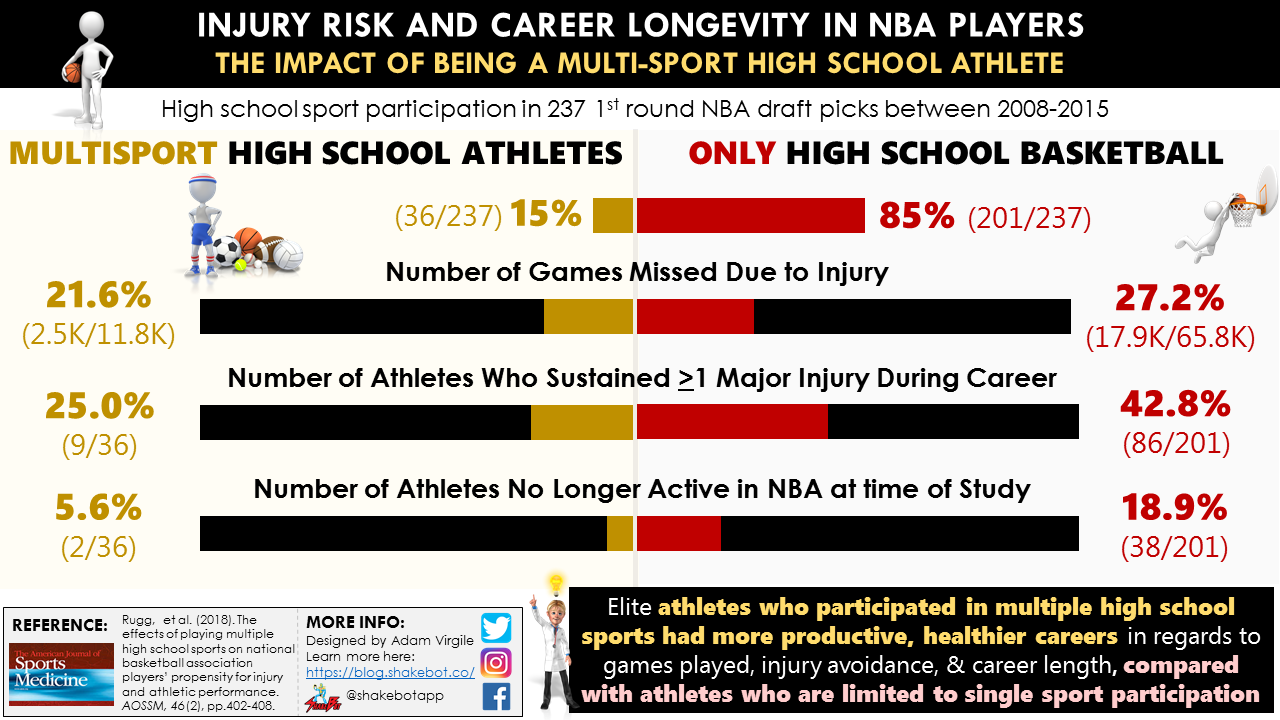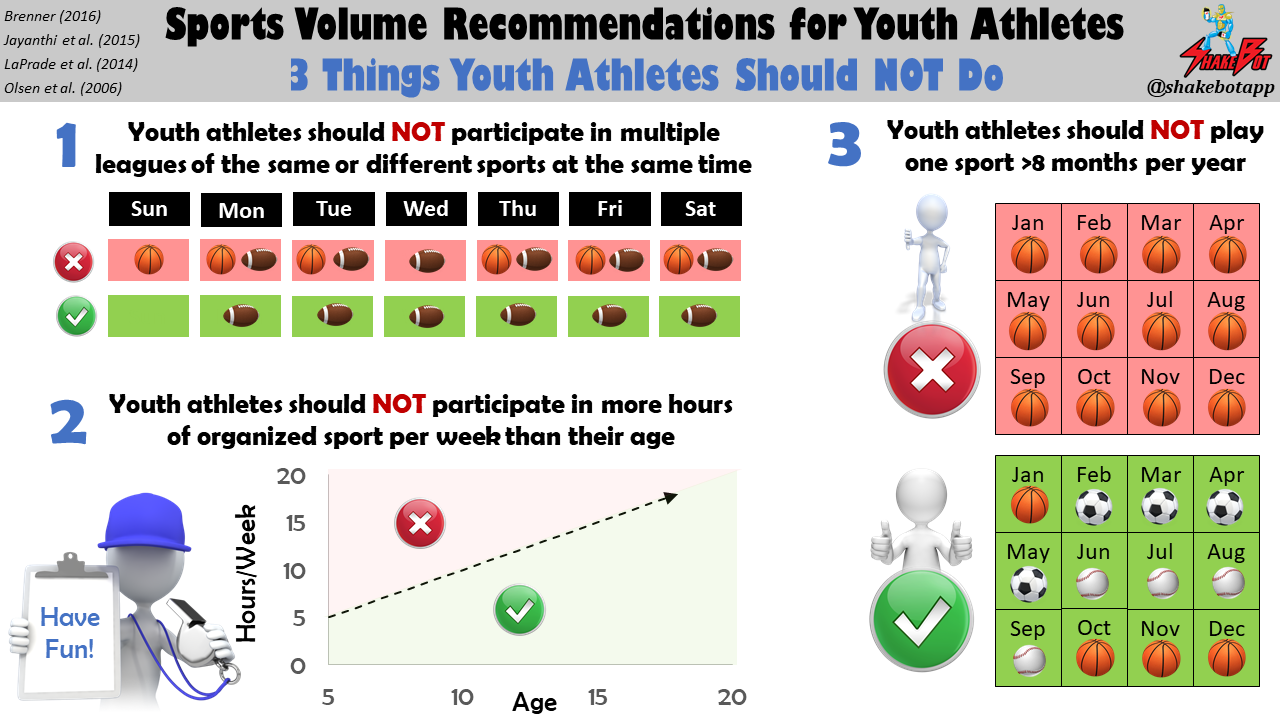What are you made of? Body composition assessment aims to answer this question. There are many different tools that can be used to estimate body composition, each with its own pros and cons. The most common tools used to assess body composition in elite sport are explored in this article.
There is, currently, no way to directly and adequately measure body composition in living humans; all body assessment methods are predictions, the accuracy of which varies with athlete and method-specific characteristics. These factors may include, but are not limited to: age, sex, nutritional state, hydration status, technician expertise, and technology precision [1]. It is important to understand the innate assumptions that exist in each method of assessment for body composition prediction, as misinterpretations may lead to inaccurate results/estimations of body composition. The only way to accurately measure an athlete’s body composition would be by post-mortem dissection and cadaver. And that’s probably not a feasible, or advisable, approach.
The most common (and simple) method for body composition assessment in athletes involves measuring skinfold thicknesses using a pair of calipers [2, 3]. There are also plenty of technologically advanced options available for body composition assessment, many of which come with significant hurdles surrounding financial investment and pragmatic application. Some of the more expensive options include dual-energy x-ray absorptiometry (DXA), air displacement plethysmography (ADP; BODPOD), and underwater weighing (UWW). Bioelectrical impedance analysis (BIA) and ultrasound (US) techniques comprise the more affordable tech-heavy alternatives. Although more expensive, there are certainly accuracy and reliability inaccuracies associated with DXA, ADP, and UWW techniques. The most affordable and user-friendly technological technique, BIA, uses assumptions with perhaps the most variance, which can severely hinder its accuracy. US is a relatively new technique, and thus, research is less advanced surrounding its application.
Inherent limitations exist with all body composition assessment techniques, including methodological assumptions and measurement errors [4-8]. Whatever the chosen method of body composition measurement may be, the importance of adopting a standardized assessment protocol cannot be overstated [8-11].
In general, factors such as time of day, prior food/fluid intake and exercise, body temperature, hydration status and gastrointestinal tract contents should be standardized wherever possible prior to any physique assessment [12].
Slater, G., Shaw, G. and Kerr, A., 2018. Athlete Considerations for Physique Measurement. In Best Practice Protocols for Physique Assessment in Sport (pp. 47-60). Springer, Singapore.
To make an appropriate decision regarding the mode of body composition assessment, the sport organization will have to weigh the various factors of each method. Some of these factors include cost, safety, equipment portability, ease of use, method accuracy & reliability, availability, invasiveness, speed of collection, and technician expertise requirements [12]. While it’s not possible to make a specific recommendation for the aforementioned reasons, I’ve provided a visual that compares many of these factors of the primary body composition methods in effort to help organizations better understand which method(s) best suit their needs [7, 12]:
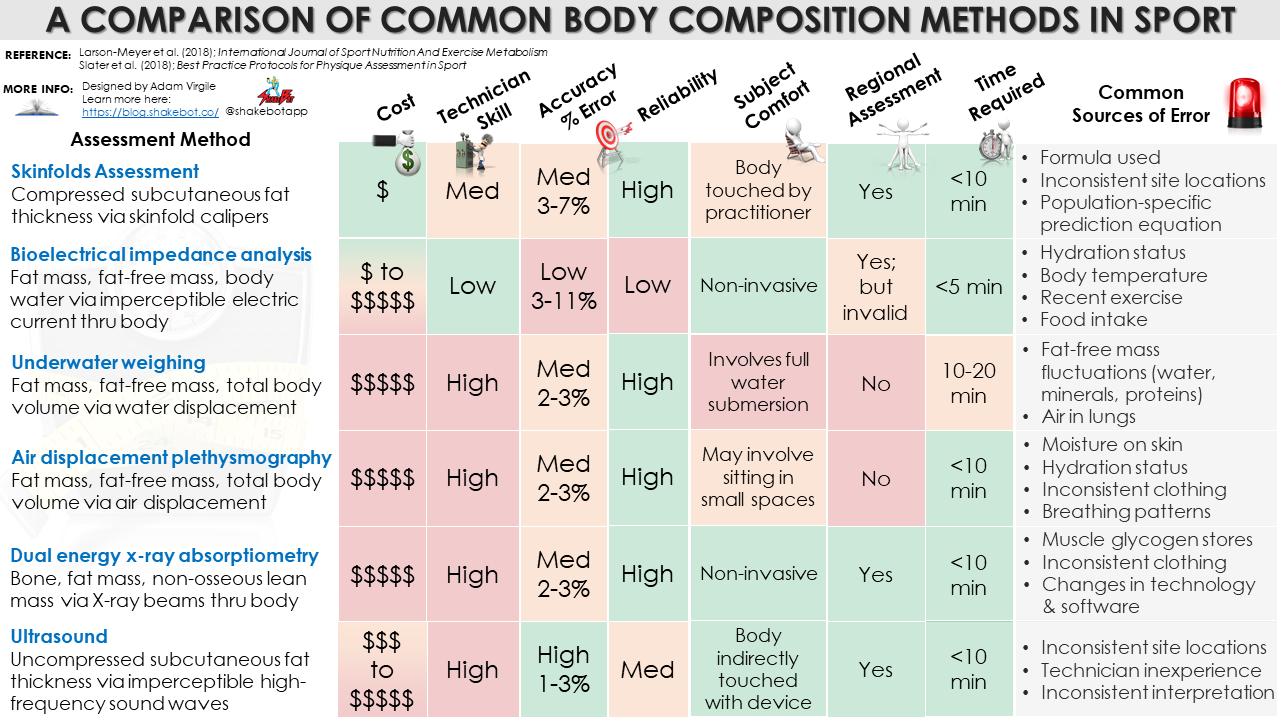
Larson-Meyer et al. (2018). Assessment of Nutrient Status in Athletes and the Need for Supplementation. International Journal of Sport Nutrition and Exercise Metabolism, pp.1-52.
Click on a link below for a comprehensive review of the body composition technique of interest:
Skinfolds assessment
Bioelectrical impedance analysis (BIA)
Dual energy x-ray absorptiometry (DXA)
Air displacement plethysmography (ADP)
Underwater weighing (UWW)
Ultrasound (US)
Enjoying the Content?
Instantly become an important part of the Shakebot community by connecting with me on social media:
Reference:
- Buckinx, F., Landi, F., Cesari, M., Fielding, R.A., Visser, M., Engelke, K., Maggi, S., Dennison, E., Al?Daghri, N.M., Allepaerts, S. and Bauer, J., 2018. Pitfalls in the measurement of muscle mass: a need for a reference standard. Journal of Cachexia, Sarcopenia and Muscle.
- Fosbøl, M.Ø. and Zerahn, B., 2015. Contemporary methods of body composition measurement. Clinical Physiology and Functional Imaging, 35(2), pp.81-97.
- Meyer, N.L., Sundgot-Borgen, J., Lohman, T.G., Ackland, T.R., Stewart, A.D., Maughan, R.J., Smith, S. and Müller, W., 2013. Body composition for health and performance: a survey of body composition assessment practice carried out by the Ad Hoc Research Working Group on Body Composition, Health and Performance under the auspices of the IOC Medical Commission. Br J Sports Med, pp.bjsports-2013.
- Gibson, R.S., 2005. Principles of nutritional assessment. Oxford University Press, USA.
- Wagner, D.R. and Heyward, V.H., 1999. Techniques of body composition assessment: a review of laboratory and field methods. Research Quarterly for Exercise and Sport, 70(2), pp.135-149.
- Duren, D.L., Sherwood, R.J., Czerwinski, S.A., Lee, M., Choh, A.C., Siervogel, R.M. and Chumlea, W.C., 2008. Body composition methods: comparisons and interpretation. Journal of Diabetes Science and Technology, 2(6), pp.1139-1146.
- Larson-Meyer, D.E., Woolf, K. and Burke, L.M., 2018. Assessment of Nutrient Status in Athletes and the Need for Supplementation. International Journal of Sport Nutrition and Exercise Metabolism, pp.1-52.
- Ackland, T.R., Lohman, T.G., Sundgot-Borgen, J., Maughan, R.J., Meyer, N.L., Stewart, A.D. and Müller, W., 2012. Current status of body composition assessment in sport. Sports Medicine, 42(3), pp.227-249.
- Nana, A., Slater, G.J., Hopkins, W.G., Halson, S.L., Martin, D.T., West, N.P. and Burke, L.M., 2016. Importance of standardized DXA protocol for assessing physique changes in athletes. International Journal of Sport Nutrition and Exercise Metabolism, 26(3), pp.259-267.
- Müller, W., Lohman, T.G., Stewart, A.D., Maughan, R.J., Meyer, N.L., Sardinha, L.B., Kirihennedige, N., Reguant-Closa, A., Risoul-Salas, V., Sundgot-Borgen, J. and Ahammer, H., 2016. Subcutaneous fat patterning in athletes: selection of appropriate sites and standardisation of a novel ultrasound measurement technique: ad hoc working group on body composition, health and performance, under the auspices of the IOC Medical Commission. Br J Sports Med, 50(1), pp.45-54.
- Kerr, A.D., Slater, G.J. and Byrne, N.M., 2018. Influence of subject presentation on interpretation of body composition change after 6 months of self-selected training and diet in athletic males. European Journal of Applied Physiology, 118(6), pp.1273-1286.
- Slater, G., Shaw, G. and Kerr, A., 2018. Athlete Considerations for Physique Measurement. In Best Practice Protocols for Physique Assessment in Sport (pp. 47-60). Springer, Singapore.

